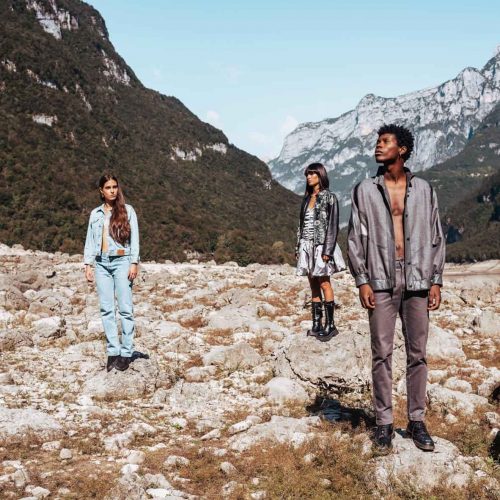General Trends That Will Define Fashion in 2022
Over the past two years, the global fashion industry has faced a number of considerable challenges as a consequence of the ongoing Covid-19 pandemic. However, by mid-2021, there were signs in the industry that conditions were taking a turn for the better, especially the fashion industry’s approach to sustainability.
To receive the Luxiders Newsletter, sign up here.
Looking ahead to 2022, the trends reshaping the fashion industry suggest that industry leaders will be making bold moves in digital, prioritizing environmental and social concerns and focusing intently on diversity, equity and inclusion. In The State of Fashion 2022 by The Business of Fashion and McKinsey & Company, the report predicts that these important fashion industry themes will set the agenda in 2022.
SUSTAINABLE FASHION INDUSTRY THEMES IN 2022
Logistics Gridlock
The fashion industry is reliant on an intricate web of global supply chains that is experiencing unprecedented levels of pressure and disruption as a result of complications related to Covid-19. Around half of global businesses suffered supply chain disruptions in 2021 with 87 percent of fashion executives expecting supply chain disruptions to negatively impact margins next year. Companies must consider new sourcing and supply chain management strategies to meet consumer demand as logistical logjams, rising shipping costs and shortages only continue to complicate the supply chain system.
Circular Textiles
In order to reduce its environmental impact, the fashion industry can implement a system of closed-loop recycling, a process by which textile product waste can be recycled into a new textile product indefinitely without losing its properties. As this system starts to be rolled out at scale, it is a promising strategy for limiting the extractive production of raw materials and decreasing textile waste. And for an industry that is responsible for 40 million tonnes of textile waste a year, closed-loop recycling could be a critical opportunity for fashion companies to engage in a more circular economy.

Product Passports
Product passports are a portfolio of technologies that store and share product information relevant to both consumers and partners. With these technologies, businesses can address significant challenges in the industry such as counterfeiting and the need for more responsible and transparent business practices. Particularly important in gaining the trust of younger consumers, brands can demonstrate their progress in sustainability through product passports by listing product information and supporting circularity initiatives like resale and garment-to-garment recycling.
Talent Crunch
A talent deficit is about to hit the fashion industry in the year ahead. Due to the Covid-19 pandemic and the adoption of work-from-home, there has been a wave of resignations across brands at senior levels, especially in digital, creative and commercial roles. Shifting employee priorities are also changing the way people work as learning and development, flexible working and sense of purpose become important retention factors after salary. Until the industry confronts its reluctance to change as well as its poor sustainability credentials, companies will have to rely on more than brand appeal and the allure of fashion to attract and retain talent.

OTHER FASHION INDUSTRY THEMES IN 2022
Uneven Recovery
Across consumer markets and sourcing regions, recovery from Covid-19-related economic shocks will be uneven as countries with strong healthcare systems and economic resilience outperform. Of the approximately 5.5 billion vaccine doses administered globally by September 2021, around 80 percent of those doses were administered in high-or-upper-middle income countries. As such, fashion players with an international presence will have to make precise investment decisions and reassess local conditions regularly to mitigate risk to their business.
Domestic Luxuries
Before the pandemic, 30-40 percent of luxury sales were generated by shoppers traveling abroad. But with international tourism not expected to fully recover until between 2023 and 2024, consumers and brands alike are shifting to domestic luxury shopping. Luxury’s biggest players like LVMH, Kering and Richemont defied expectations as sales surged thanks to consumer enthusiasm to shop locally and online, particularly in Asia and the US. To capture this shift in shopping patterns, luxury brands should engage more deeply with domestic consumers, rebalance their global retail footprints and invest in local e-commerce channels.
Wardrobe Reboot
After two years of focus on the likes of loungewear and sportswear, consumer demand is diminishing for these categories as more people return to the workplace and formal occasions are reinstated on social calendars. This so-called “revenge shopping” is building momentum in some markets and forcing brands to rely more on data-driven product development to take advantage of new shopping habits. By adjusting their inventory mix, fashion companies can ensure that assortments resonate with adjusting consumer lifestyles.

Metaverse Mindset
As the digital environment gradually becomes apart of daily reality, fashion leaders can tap into this new frontier by pushing the limits of possibility online. Part of the appeal of these virtual worlds is the chance to engage with others and build communities with some consumers even participating in “digital campfires,’’ around which they can have conversations, tell stories and co-create. If brands want to find value in this proclaimed metaverse, they should explore the potential of non-fungible tokens (NFTs), gaming and virtual fashion.
Social Shopping
Unable to visit stores or socialize in-person, the use of social media gained traction over the course of the pandemic with 74 percent of consumers saying that they are now more influenced to shop via social media. By 2027, worldwide social commerce sales are expected to reach over $600 billion. Though cases differ across global markets, brands should invest in tailoring in-app purchase journeys and testing opportunities in technology like livestreaming and augmented reality to not only engage consumers but also offer seamless shopping experiences from discovery to checkout.
Cyber Resiliance
It has never been more urgent for fashion leaders to build resilience against cyber attacks. By 2025, e-commerce is expected to account for one third of all global fashion sales. However, cyber crime is becoming increasingly common and sophisticated as companies face growing risks related to valuable consumer information and improper data handling. In order to protect data security and ultimately company reputation, brands need to shore up defenses and make digital protection a strategic imperative.

+ Words:
Tyler Lea-Thompson
Luxiders Magazine




